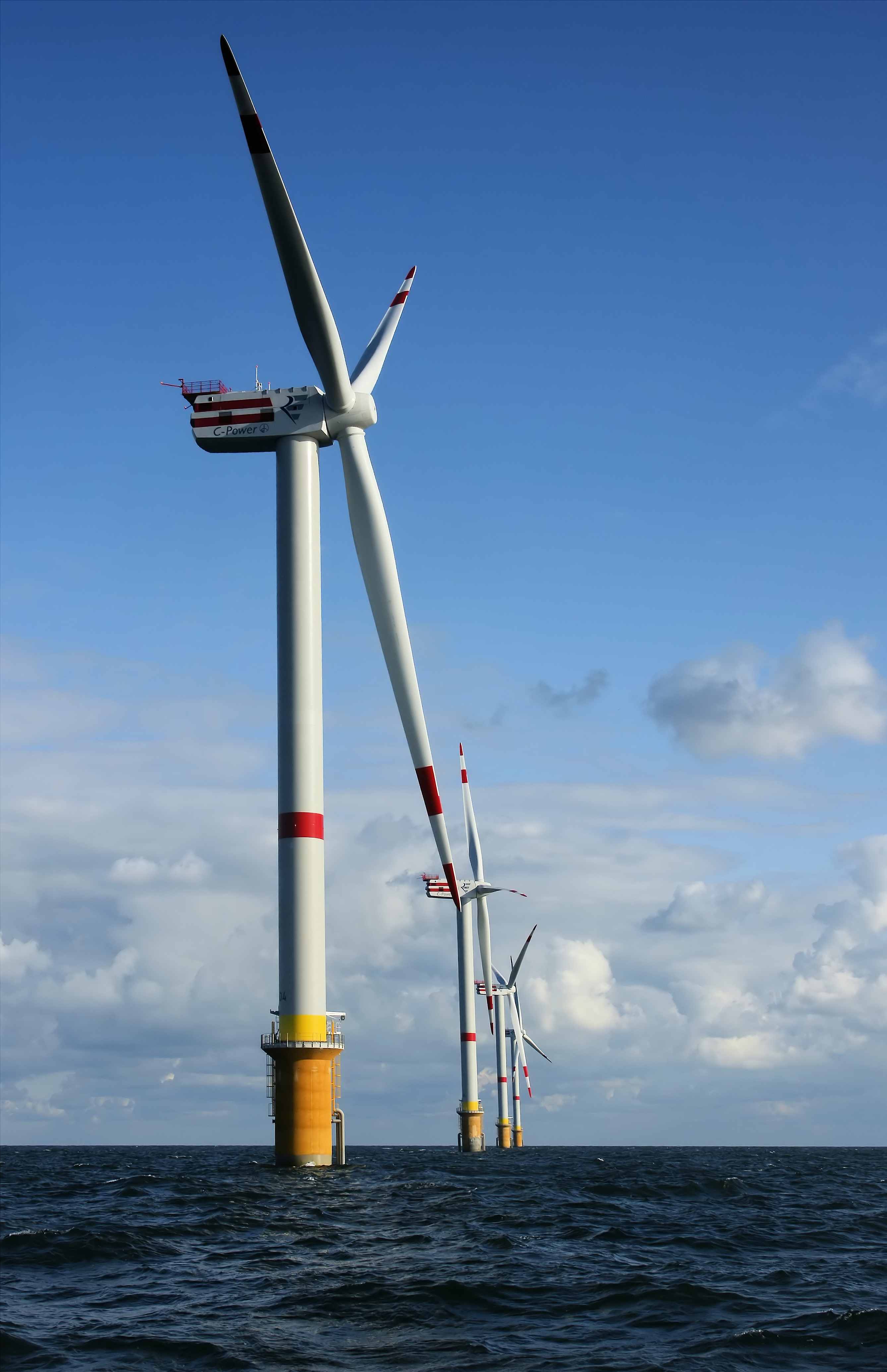
Newly constructed windmills on the Thornton Bank, 28 km off shore, on the Belgian part of the North Sea. The windmills are 157 m high with a rotor diameter of 126m. Source: Wikipedia.
James Manwell, director of the Wind Energy Center at the University of Massachusetts Amherst, presented the third part of the “Leading Voices in Energy, Sustainability, and Security” lecture series on Thursday, July 25, 2013 in Filene Auditorium. In his lecture titled “Wind Energy and Resistance in New England and Beyond,” Manwell described the role wind energy plays in his vision of a sustainable energy future and the obstacles in achieving that role.
Manwell first established the three most important characteristics of any energy system: efficiency, renewability, and the use of smart grids. A “smart grid” is a distribution and storage system that can store large amounts of energy during times of low usage, substitute in other fuels during times of high usage (similar to hybrid cars today), and manipulate how energy is distributed to rapidly adapt to changes in production and usage.
Manwell foresees a future focused on wind energy because it does not have the same failures as alternative sources. Fossil fuels, including oil, coal, and natural gas, are non-renewable and release large amounts of carbon dioxide, while nuclear energy, according to Manwell, is also dangerous and creates waste too difficult to dispose.
Fortunately, wind energy lacks these problems and has been rapidly developing over the last ten years. Manwell used the size of wind turbines as a metric for this growth. In 2001, he helped construct a turbine in Hull, Massachusetts, the largest operating wind turbine in the world at the time, which was 73 meters. The world’s largest turbine today, located in Poland, is almost three times that size.
The major objections to wind power that Manwell named are health-related, aesthetic, and environmental. He viewed the environmental concerns–deaths of birds and bats flying into the turbines and the impact of wind turbine construction–and the aesthetic complaints as minor.
However, he conceded that the health-related objections are more substantial. They were identified in 2011 by a panel of interdisciplinary experts organized by the Massachusetts Department of Environmental Protection. Manwell served on this panel as an expert on wind technology.
The panel identified three primary health concerns: ice throw, shadow flicker, and noise.
“Ice throw” is the slingshot of ice frozen onto the blades of the turbine when the turbine is active. However, the danger can be avoided by prohibiting standing within a particular distance from the turbine. The distance is calculated by multiplying the sum of tower height and rotor diameter by 1.5.
“Shadow flicker” is a shadow that is seen every few seconds in entire nearby towns during certain times of day that results from the rotation of the turbine blades and the angle of the sun. Shadow flicker may cause headaches and eye irritation and currently lacks a practical solution.
Noise is universally considered a health concern when it affects sleep or causes headaches, and there is disagreement regarding the health effects of infrasound, which is low-frequency sound waves that wind turbines can cause. Manwell considers noise to be the most significant health concern of the three he described and thus the objection most in need of a solution.
Manwell hopes to promote wind energy growth in the future by continuing to discuss and resolve legitimate objections to wind energy and by continuing to serve at the University of Massachusetts Amherst.
Leave a Reply